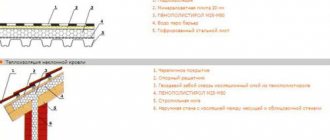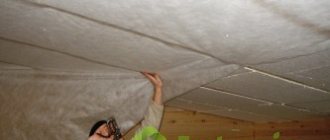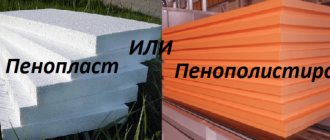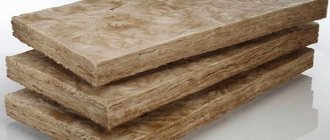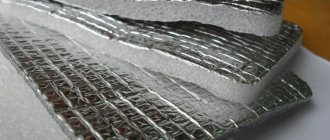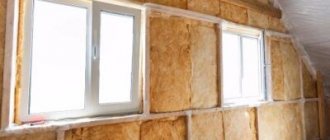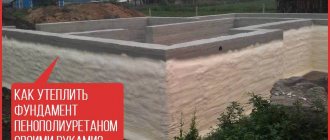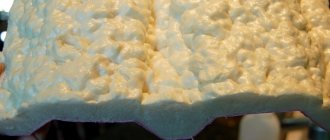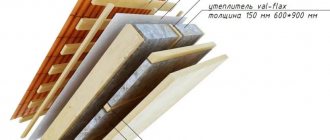Where can it be used?
You can insulate with polyurethane foam both residential or industrial buildings (inside or outside), as well as window or door openings, as well as fill voids formed in the walls when laying communications and pipes. The miracle sealant easily fills even small gaps, preventing the formation of insidious drafts. Walls, floors and ceilings can be easily insulated. It protects the tree from rotting and fungal mold. Iron – from corrosion.
The environmental friendliness of the sealant allows it to be used even in such matters as insulating a nursery. Therefore, if we return to the topic of our article: “Is it possible to insulate a house using polyurethane foam? “- the answer will be definite. It is possible and even necessary! Of course, the high price of polyurethane foam sealant may scare you away, but the advantages mentioned above will definitely be worth the money you spend on insulating your home. However, one should not forget about one nuance - the use of this type of insulating material makes the insulated room almost airtight, which means that the building or room must have well-thought-out ventilation so that problems of stuffiness or stale air do not arise.
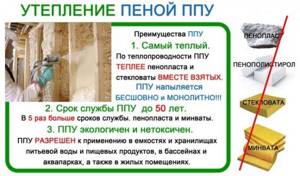
Polyurethane foam is suitable for insulating hangars, garage doors, garages, facades, windows, as well as balconies and bathtubs. Using the material, you can insulate the area between the walls between the brick and the block. Waterproofing with it from the inside and on the roof is more reliable.
To learn how to insulate a balcony with polyurethane foam, see the following video.
How to insulate a roof
Installation of thermal insulation from the outside is used in cases where there is no access to the inside of the roof. Dust is removed from the roof surface and all structural elements that are on the verge of collapse are removed. Subsequently, they can lead to a decrease in the effectiveness of thermal insulation.
External insulation is inconvenient because it is carried out under certain weather conditions. Air temperature from +10, in calm weather, in the absence of precipitation. That is, during the cold season, work can only be carried out inside.
Internal roof insulation is preferable
It is carried out at any time of the year, it is important that the air temperature is not lower than +5 degrees. As a rule, the air is heated by heat guns.
The surface is prepared in the same way: dust is removed and fragile parts of the structure are removed.
Leave a request for insulation of your home. The installers of our company “PPU Insulation” in Moscow will make your home warm in 3 days!
What are the restrictions when using polyurethane foam?
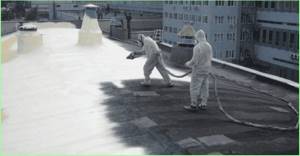
Polyurethane foam has the following characteristic property: it adheres extremely poorly to polyethylene surfaces such as films or membranes. It is not recommended to install this material on such surfaces. Over time, the degree of its adhesion to the polyethylene surface will greatly decrease.
Practical tips:
- Polyethylene films and membranes can be used to cover insulated surfaces. This will keep them intact and protect them from destruction, and the low degree of adhesion will not allow the polyethylene and insulation to stick together.
- The optimal temperature in the cylinder before spraying is from 18 to 20 degrees.
- The insulated surface should be warmer than 5 degrees (to clarify other parameters, read the instructions).
- The consumption of polyurethane foam with a layer thickness of 5 cm is approximately 2.3 kg per 1 sq. meter
Main advantages and disadvantages of the material ↑
Polyurethane foam, despite its popularity and prevalence, is characterized not only by its advantages. There are also some negative aspects that can significantly affect the final choice of polyurethane foam as roofing insulation.
If we consider the strengths of this type of heat insulator, then first of all it is worth noting that roof insulation with polyurethane foam offers the following advantages:
- possibility of use in a wide temperature range;
- excellent adhesion performance in contact with a wide variety of base materials;
- high tightness of the formed thermal insulation layer, regardless of the geometry of the roof and its complexity;
- minimum parameters of thermal conductivity;
- insignificant mass of frozen composition;
- excellent resistance to biological influences;
- inertness towards chemical influences;
- good compressive and tensile strength;
- no need to install an additional layer of vapor barrier;
- minimal moisture absorption;
- excellent characteristics of noise insulation and absorption of external noise;
- service life is about 50 years provided there are no mechanical damages.
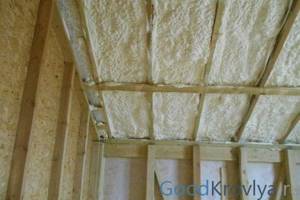
As for the disadvantages, according to users and experts, the following deserve special attention:
- all work should be carried out in protective clothing, protecting the eyes and respiratory tract, otherwise there is a high risk of causing significant harm to health;
- The process of insulating a polyurethane foam roof directly requires certain experience and knowledge, in the absence of which it is not always possible to obtain a truly effective and efficient thermal insulation layer;
- despite its non-flammability, when it comes into contact with areas of fire, the material emits a certain amount of smoke - quite harmful to humans;
- the final coating is unable to withstand the negative effects of ultraviolet rays. That is why it is preferable to carry out work indoors, immediately covering the material as it hardens;
- quite high cost, and here we are talking not so much about the polyurethane foam itself, but about the equipment for spraying it. To some extent, household kits save the situation, but they are disposable and unsuitable for use on an ongoing basis.

External insulation requires prompt protection from ultraviolet radiation
Roof insulation with polyurethane foam is an effective and reliable way to reduce heat loss to a minimum, and sometimes eliminate it completely. However, it is worth recognizing that carrying out the procedure on your own is very problematic and requires the use of special equipment. That is why it is worth entrusting the work to professionals - it is beneficial for a number of factors, including from the standpoint of financial savings.
What is polyurethane foam and how to work with it?
Polyurethane foam is a substance made by combining polymers - polyol and polyisocyanate. Their combination occurs only when everything is ready for insulation work and is not exposed to air currents. The process of distributing the material onto the work surface occurs using a sprayer.
The growth of the foam base occurs due to carbon dioxide reacting with the substance. Foam is applied to insulate the roof using special equipment - a compressor and a sprayer.
Such insulation is very firmly attached to the surface being treated and increases in mass many times over. It perfectly seals previously formed cracks, irregularities and defects in the walls, forming a fairly dense and airtight coating.
Positive properties of the material
- Does not allow heat to pass through.
Due to the constituent substances, the material applied to the working surface increases and forms in its cavity many air spaces filled with carbon dioxide, which prevents the leakage of thermal energy.
- Good adhesion to the surface.
The insulated material, regardless of the surface material and its location, forms an indestructible bond with it.

Polyurethane foam adheres well to any surface.
- Fills even the most difficult to reach spaces.
Due to this property, there is no need to perform any preparatory work for applying the material.
- Creates a soundproof effect.
The dried and processed material is able to absorb any, even the loudest sounds, preventing them from penetrating into the living space.
- Prevents rust from penetrating and spreading.
Various metal structures are used to support the material, but the applied foam ensures their complete safety and insulation from the effects of water.
- There are no seams.
Since the material is applied by spraying, its surface has a smooth appearance without joints or seams.
- Can be used to insulate structures of any complexity.
If difficulties arise in using sheet insulators, it is necessary to replace them with liquid ones, since they are applied to absolutely any type of surface.
- Not subject to fire.
Due to the fire retardant contained in its composition, the material self-extinguishes when ignited. In order for the foam to start burning, it must be exposed to a temperature of more than 500 degrees.
Due to the formation of a porous layer, the foam is lightweight and does not place unnecessary load on the work surface.
- Unaffected by germs.
Its properties completely prevent the emergence and proliferation of harmful environments.
Having such a list of positive qualities, this material still has competitors, because it also contains negative aspects in use.
Negative properties of the material
- High price category.
- Before work, you should completely protect your body parts to avoid foam getting on your skin.
- Installation skills are required for the job.
- When burned, it emits fumes of smoke that are poisonous to the human body.
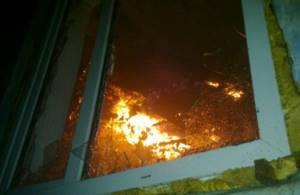
The process of burning polyurethane foam with the release of smoke.
Application
It is allowed to use Polinor insulation both inside and outside the house. At the same time, make sure that it is not directly affected by sunlight and moisture. The installation process is very simple and quick, and even an inexperienced person can cope with the task. All that is required is to install the container on the spray foam gun.
But before this, it is important to properly prepare the surface. It must be cleaned of dust, dirt and moistened with water. The foam application process is performed with smooth movements, without jerking.
Thanks to this, you can obtain a uniform layer of insulation. Polymerization occurs through reaction with moisture. If you additionally moisten the surface, the composition will be more voluminous. Rubber door seals can provide additional insulation
The process of applying foam is performed with smooth movements, without jerking. Thanks to this, you can obtain a uniform layer of insulation. Polymerization occurs through reaction with moisture. If you additionally moisten the surface, the composition will be more voluminous. Rubber door seals can provide additional insulation.
Video showing the use of sprayed polyurethane insulation polynor:
In addition, the material becomes lush even at a temperature of 20 degrees. But at a temperature of 15 degrees, the composition becomes dense. The material can be applied both to the frame and to the wall. The choice of a particular method depends on the subsequent cladding.
The following options are provided:
- applying paint;
- applying a layer of plaster;
- use of drywall, OSB, lining, siding.
Polynor insulation is sprayed on in several layers. It can be used not only for thermal insulation of walls, but also floors and roofs. It is often used when insulating various metal tanks and communications.
The sprayed composition is able to pass through all cracks and hard-to-reach places, forming a monolithic seamless layer. It will not allow heat, steam and moisture to pass through. The material should only be applied with gloves and safety glasses, as it has a strong and pungent odor. It is very difficult to be in an unventilated room, but after installation the smell disappears very quickly.
You may also be interested in learning about which insulation for external walls under plaster is best to use.
But this information will help you understand what a wall pie of a frame house with basalt insulation is and in what cases it is used.
What are the characteristics of mineral wool insulation and where can it be used and how exactly. This video explains it in great detail.
And this information will help compare the thermal conductivity of insulation materials.
This article will help you understand what Energoflex water supply pipe insulation is and where it is most often used.
Pros and cons of attic insulation with foam
To find out whether insulation will be beneficial, you need to consider all the subtleties of the technology and identify pitfalls. It should be noted right away that expenses are relegated to the background. This is a big minus for the home budget, but the goal is reliable insulation of the attic roof with PPU, so it is more important to pay attention to other important factors.
- Spraying eliminates the formation of seams. Polyurethane foam fills all the cracks and hard-to-reach places. In solid thermal insulation there are no areas where cold bridges could form.
- Polyurethane foam fits on surfaces of any complexity. This is especially important when the attic has a broken type of roof.
- The high thermal insulation properties of polyurethane foam allow for high-quality insulation in a thin layer. Thermal insulation does not steal usable space, leaving more free space inside the attic.
- Insulation by spraying occurs many times faster than laying piece material.
- Polyurethane foam adheres firmly to the surface. Moisture and fungus do not form under the insulation. It does not slide down an inclined plane.
Despite the high cost of the technology, insulating polyurethane foam in some cases allows you to save money. There are attics whose roofs were constructed with violations. Most often there is no waterproofing. When using basalt insulation, the membrane will have to be laid. In addition, from the inside of the attic, cotton slabs similarly need to be covered with a vapor barrier. High-quality membranes are expensive, plus there is an additional charge for their installation. Polyurethane foam does not need membrane protection. So the question of the favorable price of each technology remains controversial.
Polyurethane foam fills all voids and reliably adheres to surfaces of any complexity.
The disadvantage of the technology is the fear of PU foam from sunlight. Polyurethane foam is destroyed by ultraviolet radiation. However, insulation with any material ends with finishing, so polyurethane foam under lining or drywall will last for many years. Strong adhesion to the surface is considered a plus and a minus at the same time. If a roof element requires repair, a section of the insulation is stripped off and cannot be reused.
PPU does not support combustion, but when exposed to an open source of fire, the foam melts and smokes. The last disadvantage is the inability to carry out insulation yourself. Spraying is done with special equipment using a hired team.
Methods for spraying polyurethane foam: step-by-step instructions
Installation of thermal insulation of a roof structure can be carried out in two ways: spraying or pouring.
Spraying technology is performed as follows:
Liquid polyurethane foam is poured into special equipment; The first layer of insulation is applied to tightly seal the voids and cracks. Work is done from bottom to top
When spraying, special attention should be paid to the joints and corners of the roof structure; Applying the next layer of polyurethane foam. This will improve the heat and sound insulation characteristics of the roof.
For high-quality insulation, the recommended layer should be 5-8 cm.
After waiting for the material to completely harden, you should cut off the protruding parts of the insulation; The final stage is finishing. For additional protection, it is recommended to apply plaster or paint.
During installation work on thermal insulation of the roof, safety precautions must be observed. All work must be performed in a protective suit with a mask.
The spraying method differs from pouring in that polyurethane foam is applied to the surface in a foamed state using special equipment under high pressure.
It is important to know the main features of spraying technology and follow the instructions in order to eliminate possible errors during roof thermal insulation
Roof insulation by pouring method
In this way, the free cavities along the legs of the structure are filled. Liquid insulation is poured onto the slopes using pumping equipment. Thermal insulation of the roof with polyurethane foam is carried out in several layers. First, apply a thin first layer, then subsequent
It is important to take breaks for drying. This method of roof insulation has some advantages, namely: speed of implementation, simplicity, easy adjustment of the thickness of the thermal insulation layer
Material pouring process
Installation of roofing with polyurethane foam should be carried out at a positive temperature of no more than 15 degrees and in dry weather.
The technology of pouring polyurethane foam is usually used when restoring an old roof structure, if it is necessary to process a terrain of any complexity, and also if there are arches, protrusions, columns, etc.
Technology for installing soft roofing with liquid rubber
It is important not only inside, but also to apply polyurethane waterproofing material outside to protect the structure from various negative atmospheric influences. For this purpose, liquid rubber based on polyurethane is used. . Liquid rubber can be applied manually or using a special device.
Application of liquid rubber can be done manually or using a special device.
Manual application of liquid rubber
Before applying liquid rubber, the surface should be cleared of debris and dust. It should be remembered that the installation of waterproofing should be done in dry weather.
The main stages of installing a soft roof with liquid rubber:
- Prime the surface. The primer should be applied to the roof thoroughly, without leaving any gaps. This especially applies to joints and corners;
- Application of material. To apply liquid rubber evenly, it is necessary to maintain a right angle between the surface and the sprayer;
- Applying the next layer. The number of layers depends on the climatic characteristics of the area. Usually 2-3 layers are enough.
A feature of the spraying technology is the application of subsequent layers only after the first has completely dried.
While working, you can involve another person to help
Sprayed roofing not only protects the surface from moisture, but also from other negative natural phenomena. It is better to entrust the work to a qualified craftsman, but you can carry out the work yourself by strictly following the instructions.
Cost of work
| The name of the manipulations performed. | Price per 1 cubic meter/rub. | Price per 1 square meter/rub. | Spray/plate thickness |
| Spraying penoizol | 36 kg – 450; 53 kg - 800; 36 kg - 900; 53 kg – 1550; 36 kg – 1500; 53 kg – 2600; | 0 0 0 | 3 6 10 |
| Purchased foam sheets | 0 0 0 | 1200 1800 2300 | 10 15 20 |
| Pouring during construction | 1500 | 0 | 0 |
| Pouring into prepared cavities | 1500 | 0 | 0 |
| Filling with cavity drilling service | 1700 | 0 | 0 |
*
Thermal insulation of PPU roofing: your benefits, our efforts
For construction organizations - thermal insulation of PPU roofs and waterproofing of roofs of newly constructed or reconstructed facilities according to your or our turnkey project. You are getting:
- reduction of construction time;
- The guarantee covers the period of liability of the developer (performer of the work).
Owners of industrial buildings - insulation of the roof of an industrial building. You are getting:
- thermal insulation of roofs in any condition, the ability to postpone the replacement of the existing roof covering;
- carrying out work without disrupting the operation of the enterprise.
Management companies, housing and communal services organizations and municipalities - insulation of roofs of apartment buildings, public and administrative buildings. You are getting:
- guaranteed compliance with the requirements of Federal Law N 261-FZ “On energy saving and increasing energy efficiency...”;
- “minimal presence effect” during work - no disturbance for residents, employees of organizations, customers, etc.
How to insulate a roof using polyurethane foam with your own hands?
Insulation using polyurethane foam is one of the most popular and effective. The technology for performing insulation work is quite simple, but despite this it has many nuances and must be fully observed.
For spraying polyurethane foam, special kits available in retail sales are used. This kit consists of two containers containing the initial reagents for the mixture. The process of mixing them occurs directly in the working head of the mechanism during the spraying process itself.
Before spraying, the surface must be prepared. This operation is quite simple and does not require special skills. It is necessary to clean the insulated covering from debris, old paint and dust, and dry it thoroughly. When using polyurethane foam as insulation, there is no need to use waterproofing membranes or films. The surface of the material itself is an excellent insulator, does not accumulate moisture, losing its insulating properties, and does not react to water vapor.
Roof insulation work should be carried out from inside the house. Spraying with polyurethane is carried out in the spaces between the wooden slings. During a chemical reaction, the material expands, covering the surface of the insulated coating, closing all cavities and creating an airtight layer. Thanks to the gas bubbles that appear during the reaction, the material gains excellent insulating properties.
There are 2 methods for thermal insulation of roofing with polyurethane foam:
Spraying of polyurethane foam
To perform roof thermal insulation work in this way, it is impossible to do without special spraying equipment. Liquid polyurethane foam is poured into a receiving container and then sprayed over the surface to be insulated. There are 2 types of spraying units: high and low pressure units. In high-pressure installations, polyurethane foam is supplied under pressure, and in low-pressure installations, using compressed air. The first layer of polyurethane foam when applied in this way has a density of 30 to 60 kg per cubic meter. If it is necessary to apply a second layer, then its density will be about 150 kg per cubic meter.
Filling with polyurethane foam
This method can be used for a foundation of any shape. This method is often used when insulating surfaces with a complex structure: multiple protrusions, columns and other elements on which it is difficult to spray polyurethane foam. The convenience is that by pouring polyurethane foam, you can easily control the thickness of the insulating layer.
Polyurethane foam, regardless of the method of its application, after hardening acquires not only high thermal insulation and waterproofing properties, but also soundproofing characteristics. Most often, private developers use the spraying method. This process is quite simple even for a non-professional builder; you can do it yourself. To do this, you do not need to have expensive professional equipment. It will be enough to purchase a disposable spray kit in the store, which even a beginner in this matter can handle.
Kit for spraying polyurethane foam
Set contents:
- Cylinders containing substances (isocyanate and polyester) under pressure.
- Hoses for connection.
- Spray gun.
- Replacement nozzles for the gun.
- Lubricant
When performing thermal insulation work, you must adhere to safety rules that will protect the health of you and the residents of your home:
- The work process must take place in a special protective suit and goggles
- A respirator must be used.
- The use of gloves to protect your hands is also necessary.
After the material has hardened on the insulated surface, it is only necessary to perform its external decorative finishing. You can use sheet materials such as plywood, chipboard or the like.
Polystyrene foam and polyurethane foam - what are the differences?
First of all, these are two different materials , both in chemical composition and mechanical properties. If you compare polyurethane foam with polystyrene foam, the most striking difference will be hardness .
Important!
Polystyrene foam (expanded polystyrene) is practically inflexible ; at the slightest bend it can break, while polyurethane foam allows almost any deformation without losing the integrity of the structure.
Moreover, polyurethane foam has elasticity, the ability to take its previous shape after stress is removed. Such a difference in mechanical characteristics with more or less similar heat-conducting, noise-absorbing and other parameters puts the use of these two materials at different levels.
Polystyrene foam is cheaper and can be used in places where it will not experience any physical stress. In addition, a certain rigidity of the foam in some cases is an advantage that greatly simplifies the installation process.
PUF is a material that has several types and different densities, which creates many subtypes with different characteristics. All varieties have one main advantage in common - almost complete resistance to water , which is the most significant advantage for insulation.
Characteristics
There is also no clarity about the characteristics of the material.
Thermal conductivity
When advertising their products, sellers indicate very low thermal conductivity values of polyurethane foam. Rarely, you can find a coefficient of 0.017 W/(m×°K), more often - 0.020-0.022 W/(m×°K). But this is from the realm of fantasy. Even in laboratory conditions, where all requirements for the quality of components and their formulation can be met, it is rarely possible to obtain a thermal conductivity index of 0.022 W/(m×°K).
Similar values are achieved only with the use of freon r141b as a foaming agent, which is prohibited for use in Europe (and therefore is not produced). The use of other foaming agents increases the value of the coefficient, and therefore in European countries a thermal insulation layer with a thermal conductivity of 0.028 W/(m×°K) is considered high quality.
In Russia, the real figures are 0.030-0.035 W/(m×°K) (the specific value depends on the experience of the performers).
However, consumers should not be upset. Even if the technology is violated, the actual thermal conductivity of the insulation deserves respect, since it is one of the best and comparable to basalt wool.
Density
The density of the insulation determines the bending strength (fragility), the weight load on the structure and the thermal insulation properties.
Two-component, closed-cell polyurethane foam, can be obtained in different densities, combined into 3 groups.
- 1 group. Low density - 28-32 kg/m3. The main scope of application is ceilings and walls from inside the room, onto which the material is applied in a thin layer. Thermal conductivity coefficient is from 0.028 to 0.032 W/(m×°K). Vapor permeability at the wood level is 0.05 mg/(m*h*Pa), which makes it possible, albeit conditionally, after detailed calculations, to use polyurethane foam for insulating the walls of wooden houses (more on the problem below).
- 2nd group. Average density - 32-40 kg/m3. A classic representative of the species. The components are sold separately, in cylinders. Used to insulate all structural elements of a building. It has the lowest percentage of moisture absorption among all types of insulation.
- 3rd group. High density - 40-80 kg/m3. Achieving such density using portable equipment is theoretically possible, but practically impossible. It is used in places with high mechanical load on the heat-insulating layer, but only after special surface treatment, which experts call armoring.
Life time
Manufacturers of polyurethane foam consider their products to be durable, with a service life of 30-50 years. These figures are confirmed by the experience of using this insulation in the USA and Europe. However, in Russia, in the first years of using the new product, they were faced with the fact that the insulation from the facades of multi-storey buildings began to fall off in layers after 5-6 years of operation.
At first, the root of the evil was seen in the poor adhesion of polyurethane foam to the wall material. When the lag became widespread, they began to study the problem seriously and turned to Western experience. It turned out that the reason is in a completely different plane - the sun's rays. The material does not tolerate ultraviolet irradiation, ages, or in the language of scientists: it is subject to UV destruction. The aging rate is about 1 mm per year.
The worst enemy of polyurethane foam is the sun.
Simply painting the insulating layer with fade-resistant paint or mastic protects the material from destruction, extending its service life to 30 years when the facade is open. If the insulated facade is finished with siding or porcelain stoneware, you don’t have to worry about the safety of the insulation at all.
Adhesion
Foamed polyurethane has excellent adhesion to all types of building materials, with the exception of polyethylene film. For example, in order to tear polymerized insulation from concrete, you will have to apply a force of at least 2.5 kg/cm2, and for steel - 1.5 kg/m2. These are very large numbers. No wonder the best types of glue are polyurethane based. But such adhesion is possible only if the insulation is sprayed onto a clean and dry surface.
The insulation will not adhere to whitewash and “boiling” plaster; it will fall off along with them under minor mechanical loads due to low bending strength.

